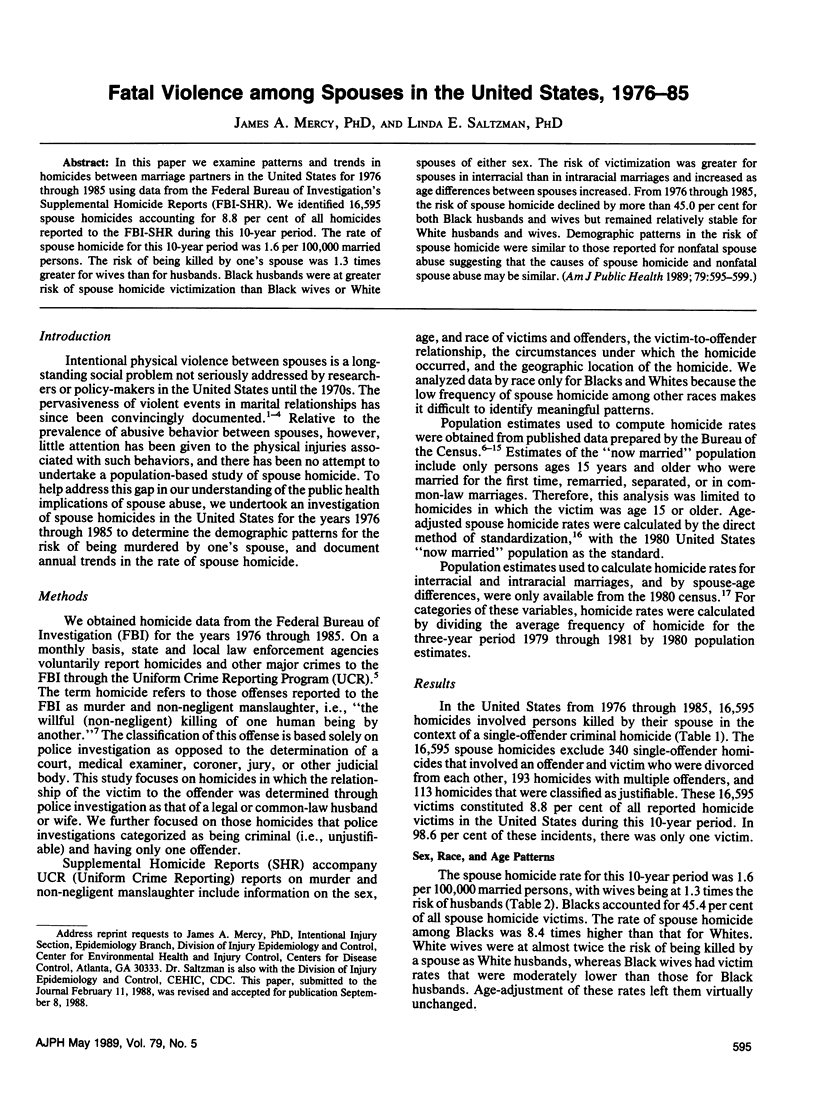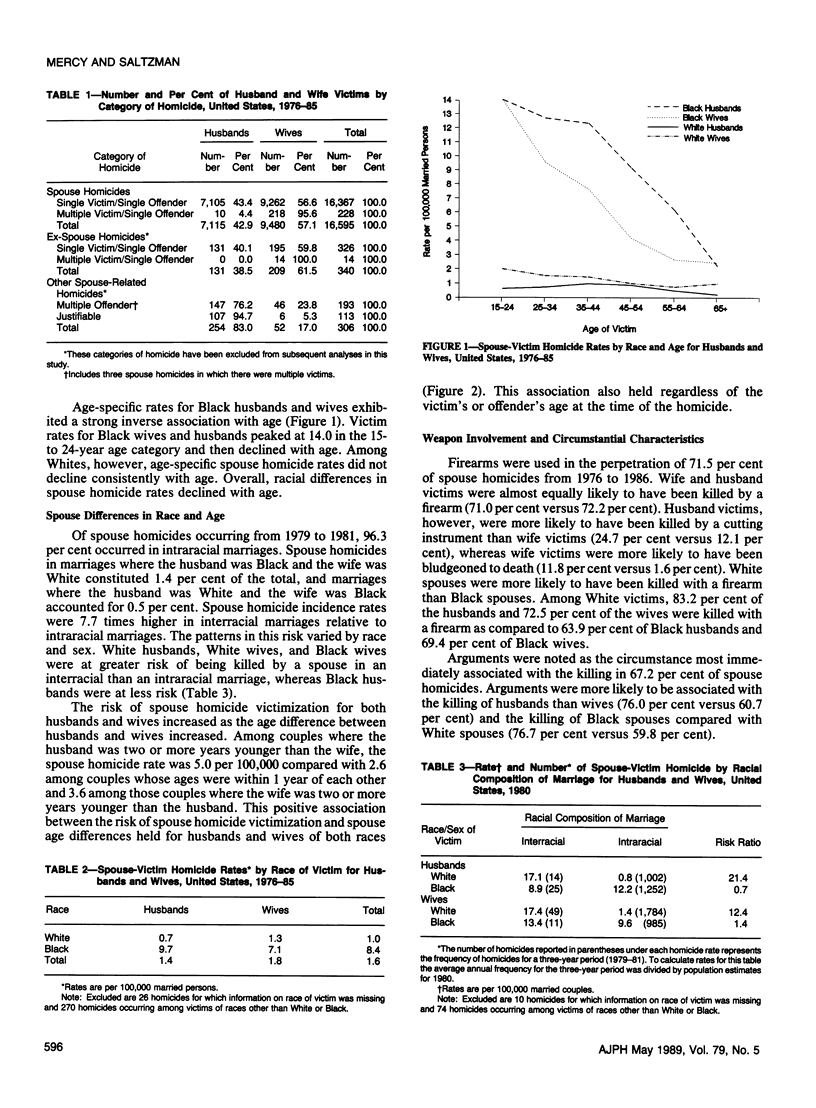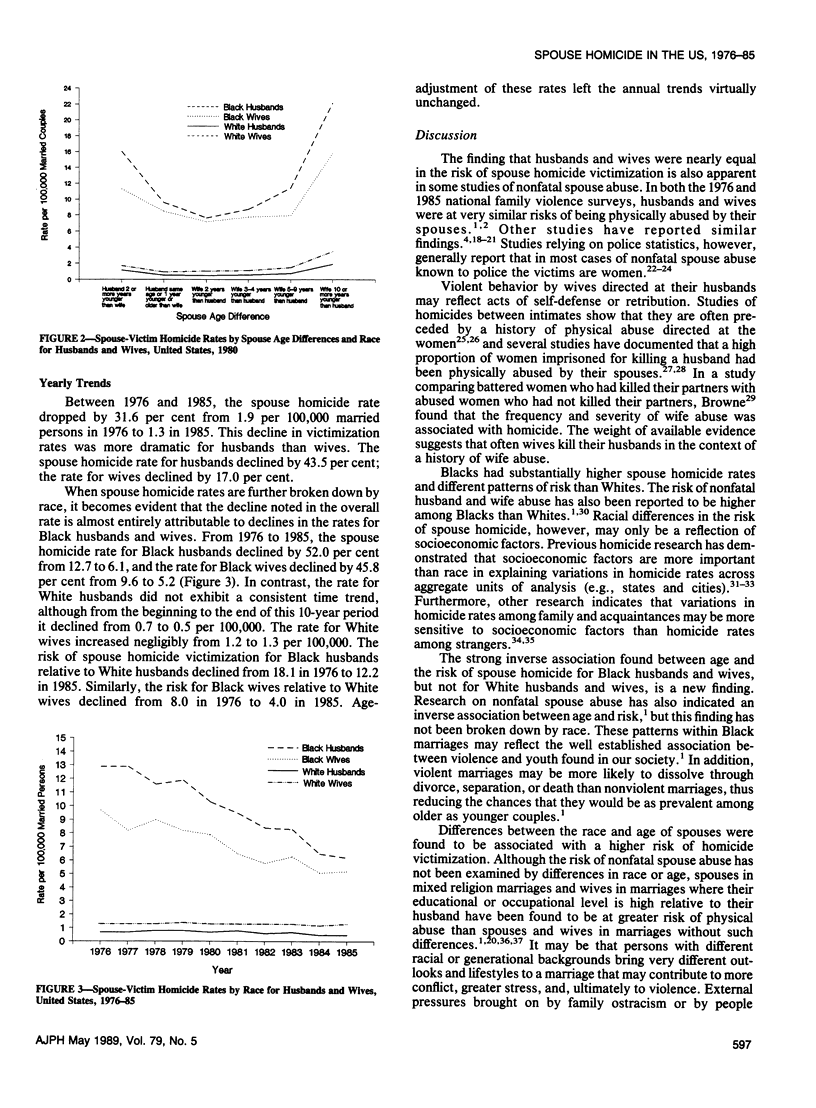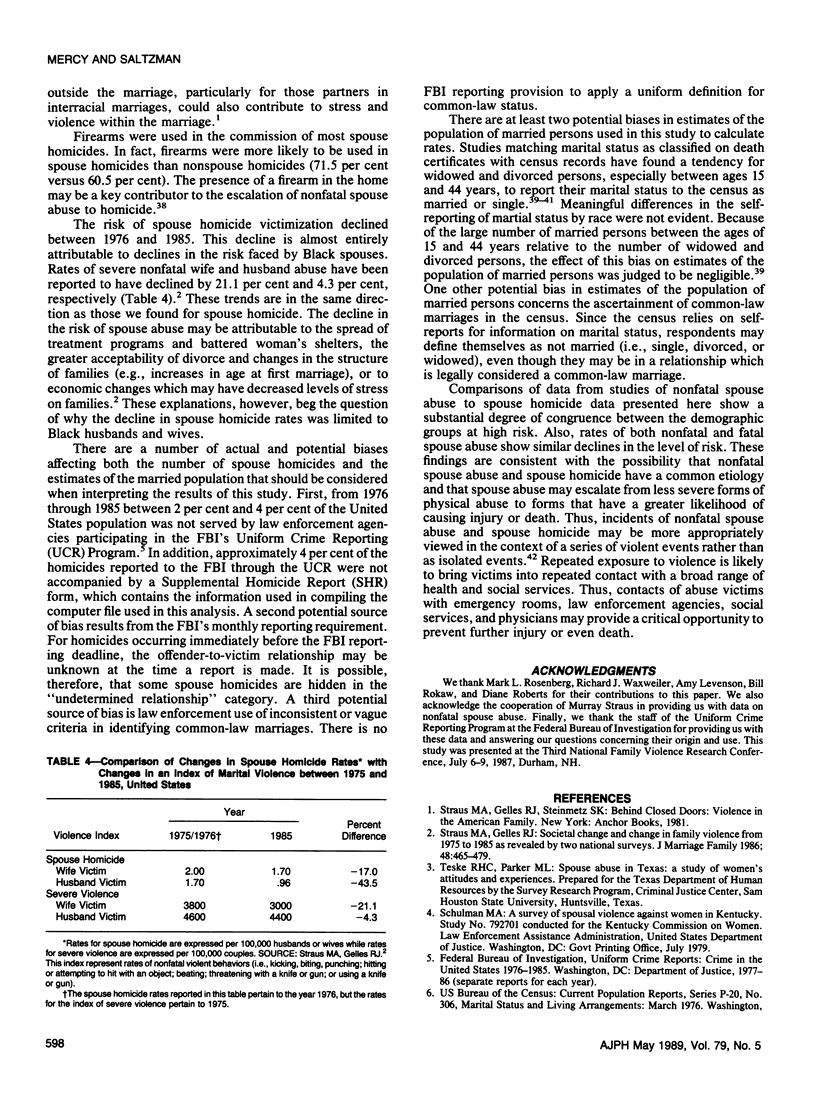Abstract
In this paper we examine patterns and trends in homicides between marriage partners in the United States for 1976 through 1985 using data from the Federal Bureau of Investigation's Supplemental Homicide Reports (FBI-SHR). We identified 16,595 spouse homicides accounting for 8.8 per cent of all homicides reported to the FBI-SHR during this 10-year period. The rate of spouse homicide for this 10-year period was 1.6 per 100,000 married persons. The risk of being killed by one's spouse was 1.3 times greater for wives than for husbands. Black husbands were at greater risk of spouse homicide victimization than Black wives or White spouses of either sex. The risk of victimization was greater for spouses in interracial than in intraracial marriages and increased as age differences between spouses increased. From 1976 through 1985, the risk of spouse homicide declined by more than 45.0 per cent for both Black husbands and wives but remained relatively stable for White husbands and wives. Demographic patterns in the risk of spouse homicide were similar to those reported for nonfatal spouse abuse suggesting that the causes of spouse homicide and nonfatal spouse abuse may be similar.
Full text
PDF




Selected References
These references are in PubMed. This may not be the complete list of references from this article.
- Centerwall B. S. Race, socioeconomic status, and domestic homicide, Atlanta, 1971-72. Am J Public Health. 1984 Aug;74(8):813–815. doi: 10.2105/ajph.74.8.813. [DOI] [PMC free article] [PubMed] [Google Scholar]
- Jouriles E. N., O'Leary K. D. Interspousal reliability of reports of marital violence. J Consult Clin Psychol. 1985 Jun;53(3):419–421. doi: 10.1037//0022-006x.53.3.419. [DOI] [PubMed] [Google Scholar]
- Kellermann A. L., Reay D. T. Protection or peril? An analysis of firearm-related deaths in the home. N Engl J Med. 1986 Jun 12;314(24):1557–1560. doi: 10.1056/NEJM198606123142406. [DOI] [PubMed] [Google Scholar]
- Loftin C., Hill R. H. Regional subculture and homicide: an examination of the Gastil-Hackney thesis. Am Sociol Rev. 1974 Oct;39(5):714–724. [PubMed] [Google Scholar]
- Saunders D. G. When battered women use violence: husband-abuse or self-defense? Violence Vict. 1986 Spring;1(1):47–60. [PubMed] [Google Scholar]
- Stark E., Flitcraft A., Frazier W. Medicine and patriarchal violence: the social construction of a "private" event. Int J Health Serv. 1979;9(3):461–493. doi: 10.2190/KTLU-CCU7-BMNQ-V2KY. [DOI] [PubMed] [Google Scholar]
- Williams K. R. Economic sources of homicide: reestimating the effects of poverty and inequality. Am Sociol Rev. 1984 Apr;49(2):283–289. [PubMed] [Google Scholar]


